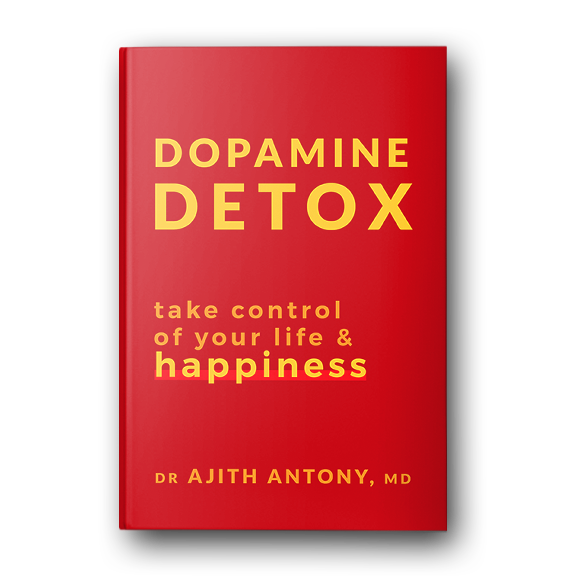In the annals of human history, from Aristotle’s musings on the golden mean to the modern musings of gym trainers, one truth remains universally acknowledged: Movement is essential. And not just to escape pesky predators or win at musical chairs, but rather as an elixir for well-being and happiness.
The link between physical exercise and mental well-being is one that has been explored, examined, and expounded upon across centuries. Though the sentiment is hardly novel, modern science has illuminated fascinating connections that transcend the superficial “feel good” factor associated with a good sweat session. In fact, the science of exercise is a burgeoning field, offering insights into everything from cognitive function to emotional resilience.
The sheer complexity of the subject makes it ripe for exploration, but for those with an aversion to physical exertion, fear not: this exploration will require no more than a casual scroll through this text.
The Biology of Exercise
A robust body is not just a symbol of vanity, as enticing as flexing in the mirror may be. Engaging in regular exercise unleashes a cascade of biochemical processes that might just make your neurons as happy as your newly-toned muscles. Here’s how:
1. Endorphins: The “Feel-Good” Chemicals
Endorphins, or nature’s way of making you feel like you could conquer the world post-jog, are naturally occurring opiates produced during exercise. They are part of a class of substances known as neuropeptides, and they function by interacting with the same receptors in the brain that bind to pain medications like morphine.
How do Endorphins Work?
During strenuous physical activity, the body’s demand for oxygen exceeds the supply, leading to a phenomenon known as an “endorphin rush.” This rush triggers a reduction in pain sensation and a subsequent increase in pleasure.
Effects of Endorphins
Endorphins have been linked to feelings of euphoria, a phenomenon often referred to as the “runner’s high.” But it’s not just runners who benefit. Any form of exercise can prompt this delightful response, from dancing like nobody’s watching to a rigorous session of high-intensity interval training (HIIT).
And while they may not bestow upon you superhero capabilities (though one can always dream), they do provide a much-needed respite from daily stressors, acting as a natural form of stress relief and mood enhancer.
2. Serotonin and Dopamine: Happiness’ Partners in Crime
These neurotransmitters, essential in mood regulation, are positively influenced by physical activity. Often dubbed the “happy chemicals,” serotonin regulates mood, appetite, and sleep, while dopamine is linked to pleasure, reward, and motivation.
How do Exercise Influence Them?
Physical exercise increases the availability of tryptophan, a precursor to serotonin, in the brain. Dopamine, meanwhile, is released during activities that are found enjoyable, including exercise. It’s like they’ve been waiting for your permission to host a joyful party in your brain, and your morning run is the invitation.
Effects of Increased Serotonin and Dopamine
By influencing these neurotransmitters, exercise can have profound effects on mental health. From easing symptoms of depression and anxiety to enhancing cognitive function and memory, the impact of these chemicals goes beyond merely feeling good. It’s about a holistic improvement in quality of life.
3. Brain-Derived Neurotrophic Factor (BDNF): A Most Elegant Brain Fertilizer
BDNF is involved in neuroplasticity, or the brain’s ability to adapt and grow. Think of it as the gym membership for your brain, sans the dubious initiation fees.
How does BDNF Work?
This protein supports the survival of existing neurons and encourages the growth and differentiation of new neurons and synapses. In simpler terms, it keeps the brain young, nimble, and ready to learn.
Effects of BDNF
Exercise has been found to increase BDNF levels, thereby enhancing cognitive functions, improving memory, and even potentially reducing the risk of neurodegenerative diseases like Alzheimer’s. Far from mere brain fertilizer, BDNF is a veritable fountain of youth for the mind.
In a world increasingly obsessed with quick fixes and magic pills, these chemical players remind us of the inherent wisdom of the body. The natural symphony between movement and mind demonstrates that a well-executed lunge or graceful pirouette can be as nourishing to the soul as it is to the physique. It’s not just about looking good; it’s about a joyful existence, one sweaty workout at a time.
The Psychological Benefits
We know that exercise has profound effects on the body, but what about the mind? Indeed, the gains (mental, not muscular) are equally impressive:
1. Cognitive Enhancement
Numerous studies have shown improvements in memory, attention, and decision-making following regular exercise. It seems the treadmill might just be the path to enlightenment—or at least a better SAT score.
2. Emotional Resilience
Physical activity has been linked to greater emotional resilience. In other words, those miles you’re running might just distance you from emotional turmoil as well.
3. Social Connectivity
Group exercises foster social connections, allowing us to bond over shared agony and achievement. After all, nothing says friendship like a synchronized collapse after a group fitness class.
Conclusion
It seems that our ancestors were onto something when they insisted on movement as an essential aspect of life. The harmonious dance between body and mind is facilitated by exercise in a way that is both scientifically profound and practically accessible.
Though the physical exertion may bring temporary discomfort, the potential mental gains are beyond measure. So, whether you’re lifting weights to lift your spirits or running towards mental clarity, the science of exercise offers compelling evidence that movement indeed fuels happiness.
Next time you consider skipping the gym in favor of a sit-down with your favorite book, remember: The pen may be mightier than the sword, but the treadmill might just trump them both. At the very least, it’s a step in the right direction.
